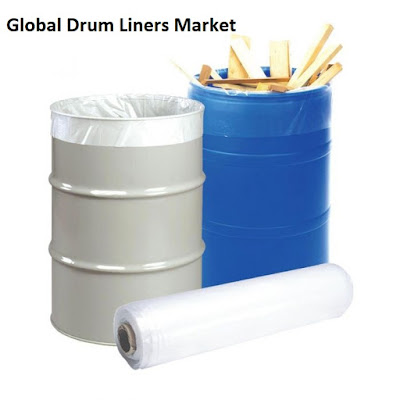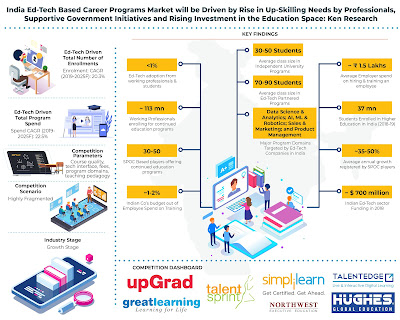How
has Kuwait Medical Devices Market Evolved?
Kuwait medical device market is in its late growth stage
and has a limited number of large players dominating the market. The history of
medical devices dates back to early 1910s when first hospital in Kuwait was
constructed. The medical devices market in Kuwait is largely import driven. The
medical devices market in Kuwait has witnessed growth owing to the increased
participation of private sector in healthcare. Technological innovations and
increased focus on infrastructure development has also resulted in increase in
demand of medical devices in Kuwait. There market consists of all the major
players in global medical devices industry. Heavy investments in healthcare
infrastructure projects with aid of private sector are driving the growth.
Increase in number chronic diseases have resulted in increase in demand
of healthcare facilities in the country.
The end users of medical devices are government as well as
private sector hospitals, clinics and primary care centers In terms of revenue;
the market for medical devices has grown at a CAGR of ~% from USD ~ million in
2012 to USD ~ million in 2017. Increased investment in developing new
facilities and upgrading existing infrastructure are the key drivers for demand
of medical devices in Kuwait. The share of private sector as an end user has
increased over the years due to opening up of investment opportunities in the
market. The products that exist in the market ranges from simple syringes and
medical chairs to complex MRI and CT scanning machines. The market dynamics of
a product changes from product to product.

Kuwait Medical Devices Market Segmentation
By Type of End User:
There are two
types of end user in the market. In 2017 the market share of public sector was
~% and rest of the ~% of the demand was generated by private sector. The
revenue generated from sale of medical devices to public sector was USD ~
Million and for private sector was USD ~ Million. High share of public sector
is mainly on account of large number of Kuwaitis visiting public hospitals
which offer free services. Subsidized
fee for non Kuwaitis also support more patients visiting public hospitals.
By Type of Sales Channel:
Sales
channels for medical devices are offline sales and online sales. In 2017,
offline sale constituted majority of the demand for medical devices in Kuwait, accounting
for ~% of the total sales in the country, online sales constitute the rest ~%.
The total revenue generated from sales of medical devices through offline sales
was USD ~ Million. Whereas for online sales the total revenue generated was USD
~ million. Most of the major companies use offline sales as the government
sector procure the medical devices through offline channel only.
By the Type of Medical Devices:
The market of
Kuwait medical devices is dominated primarily by orthopedic devices and Auxiliary
devices which constitute ~% and ~% of the market share respectively. The
revenue generated from sales of these two segments in 2017 was USD ~ Million
and USD ~ Million respectively. The large market share of these two segments is
because of large number of diabetic patients in Kuwait Diagnostic imaging
products and medical disposables also contribute significant share of the
market.
Competitive Landscape in Kuwait Medical Devices Market
The Kuwait
medical device market is concentrated with a few large global players and has
generated a majority share in terms of revenues. Kuwait medical device
market is majorly import driven. The import value of the medical devices
witnessed an increase from USD ~ Million in 2012 to ~ Million in 2017, due to
increasing expenditure on healthcare sector. There is no manufacturing facility
of medical devices located in Kuwait. Some leading import destinations for Kuwait medical devices
are USA, Japan, Germany, and India.
Major manufacturers:
Canon,
Philips Health, GE Healthcare, B.Braun etc. GE Healthcare has the majority of
share in the market. GE healthcare, Siemens and Canon are in diagnostic imaging
sector whereas Johnson and Johnson is in the medical disposable sector.
Major Distributors:
Al Essar
group, Advanced Technology Company, Tareq Company are major distributors. Among
these players Advanced Technology Company (ATC) has the majority of the market
share. These distributors buy the medical devices in bulk to cut on the freight
charges due to absence of any localized manufacturer of medical devices.
The products used in the market vary with the type of condition and where
they are used. The products range from simple syringes and medical chairs to
complex technology using products such as computer tomography machine, MRI
scanner. The market dynamics of the medical device ranges from device to
device.
The market is dominated by players who are present in high end
products. These manufacturers differentiate themselves on prices, technology
and value added services.
Kuwait
Medical Devices Market Future Outlook and
Projections
The market
for medical devices in Kuwait is expected to register a five year CAGR of ~%
from 2017 to 2022 as the market size is expected to grow from USD ~ Million in
2017 to USD ~ Million in 2022. The growth is expected to be less than the
growth from 2012 to 2017 as the decrease in oil prices has resulted in decrease
in government spending in the country. Demand for medical devices will be
largely driven by private sector investments, increase in number of chronic
diseases and healthcare infrastructure development. This will lead to increase
in large number of medical devices in the country. New technologies such as
artificial intelligence will be widely applied across various domains, which is
currently limited to few projects and is expected to grow by manifold in the
near future.
Key Segments Covered:-
Types of Medical Devices:-
Orthopedic
Devices
Auxiliary
Devices
Medical
Disposables
Diagnostic
Imaging/ Radiology Equipments
Diabetic
Products
Dental
Products
Aesthetic
Devices
Type of End Users:-
Public Sector
Private
Sector
Type of sales Channel:-
Offline Sale
Online Sale
Key Target Audience:-
Hospitals
Doctors
Pharmacies
Medical
Devices Manufacturers
Medical
Devices Distributors
Diagnostic
Labs
Ministry of
Health
Period Captured in the Report:-
2012-2017 –
Historical Period
2018-2022 –
Future Forecast
Companies Covered:-
Major Manufacturers:-
General
Electric Healthcare
Canon Medical
System (Toshiba Medical)
Johnson and
Johnson
Medatronics
Major Distributors:-
Advanced
Technology Company
Al Essa Group
Bader Sultan
Safwan
Trading
Al-Sayer
Medical
Yiaco
Central
Circle
Fourth
Dimension
Tareqs
For More Information on the research report, refer to
below link:-
Related Reports:-
Contact Us:-
Ken Research
Ankur Gupta, Head
Marketing & Communications
+91-9015378249






